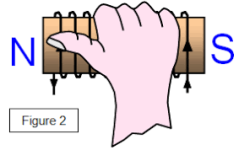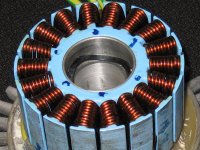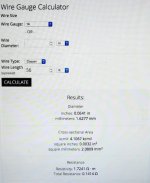Thanks for all the thumbs up! Geez, it only took 17 pages!

Well, thats what happens in real time, we just call it entertainment.
And thanks wturber, for helping with that again, I didn't realize that I was one space off. I think I finally
have all the pieces of the puzzle now.

Let the videos roll! I'll try to make one of the bike in action
when I get that far. ( Should be pretty soon, since I'm getting all gitty over it!)
Larsb, I'll get the KV next,,, it will be very interesting to know, although I suspect that it's still fairly low,
that is 14 X the .30v that we had before. It is actually making more sense to me now that I realize how fast
the motor spins. I measured it at 1110 RPM. with a 40v battery pack.
Before I charged the batteries,which were pretty low, it got up to 1500 RPM. Go figure.

The less wire winds, the more speed, and less KV. Thats 'open' speed not under load, so I'll put it on the bike
and see how it performs first, and then think about adding some more winds. I only really need 3-400 RPM.
I'll have to go back and read my own post, but if I remember right, more winds don't give me more torque,
just less speed, and less heat?
I'm still trying to figure out where I went wrong on the coil wind direction, according to the right hand rule,
changing direction of turns, changes direction of poles. But that's not quite true. I think it doesn't matter
which way you wind a coil,.. only the direction of voltage. That's where I went wrong. lesson learned.


The runout is the result of the design change I made way back in the build when I decided to move the
back iron from the outside of the rotor, to the inside of the rotor. This placed the drive bearing in a different
position on the axle,.. and since the axel was already made, theres no easy fix. At least, I think thats the deal.
I'm pretty sure that I have to go back and bond in some material, and re-turn the axle a little in that spot.
Like I say, the first one is the worst one, and it seems to spin alright. I'll see what I can do, but I'm looking
forward to V2,.. as so many things are out of spec. on this one.
I know it's pretty motor, but it's an experimental at hart, and it's made for proof of concept, and to extract
all the information needed for the next one, which hopefully, will be much better. Both in design, and construction.





